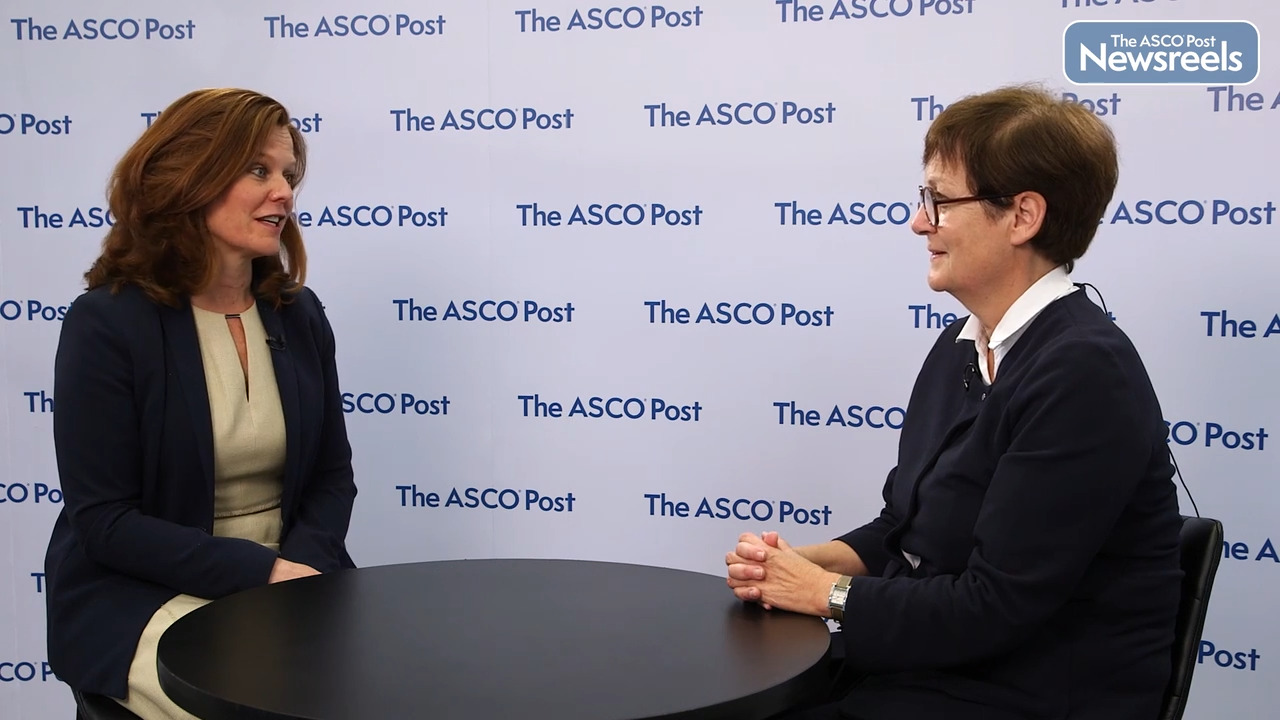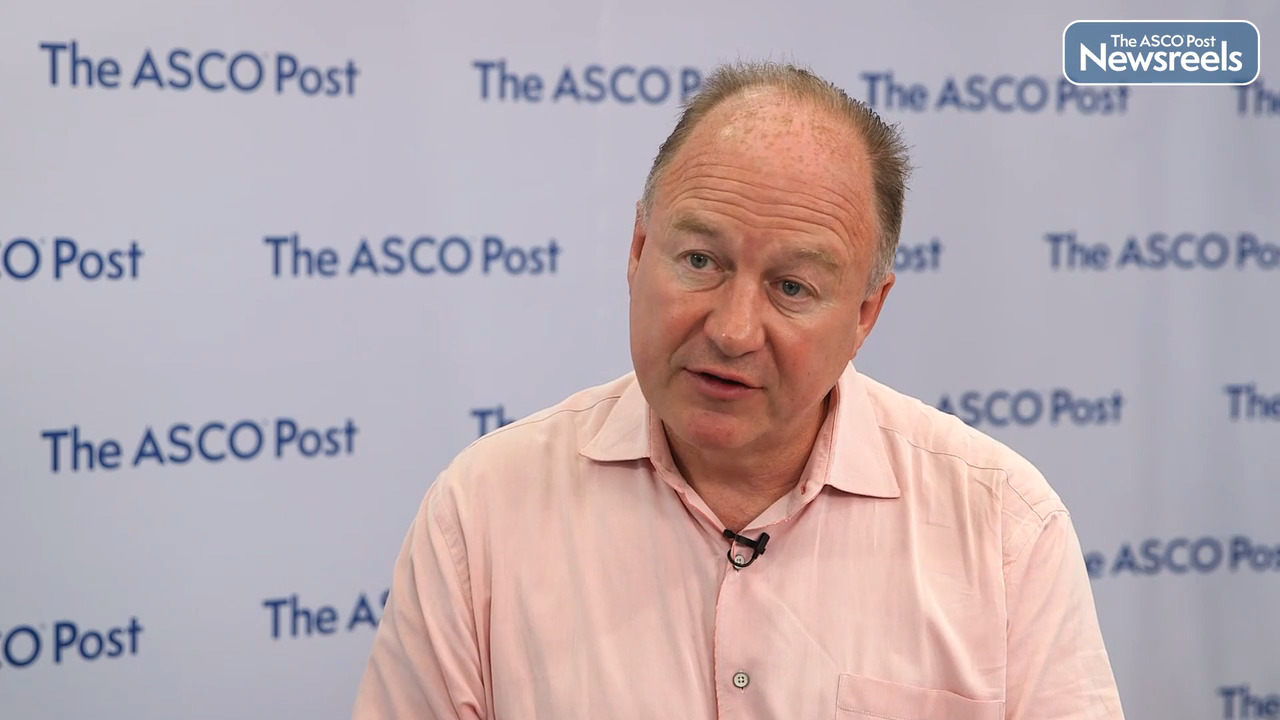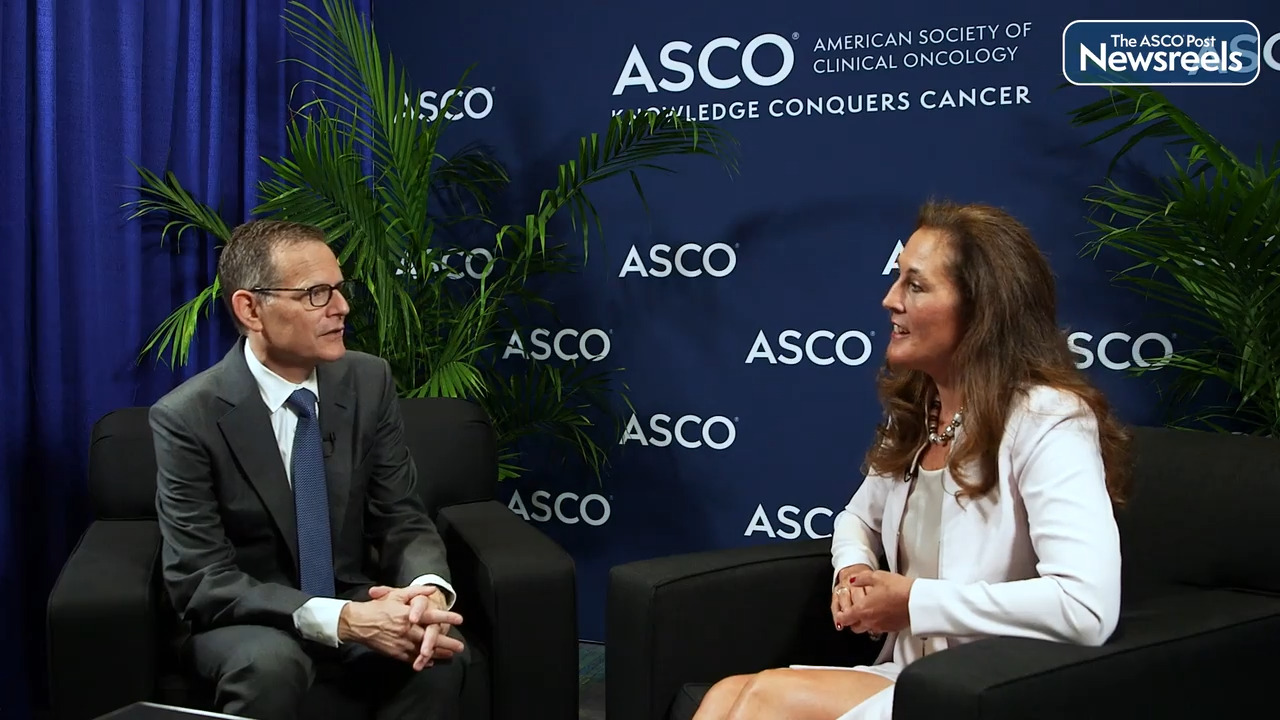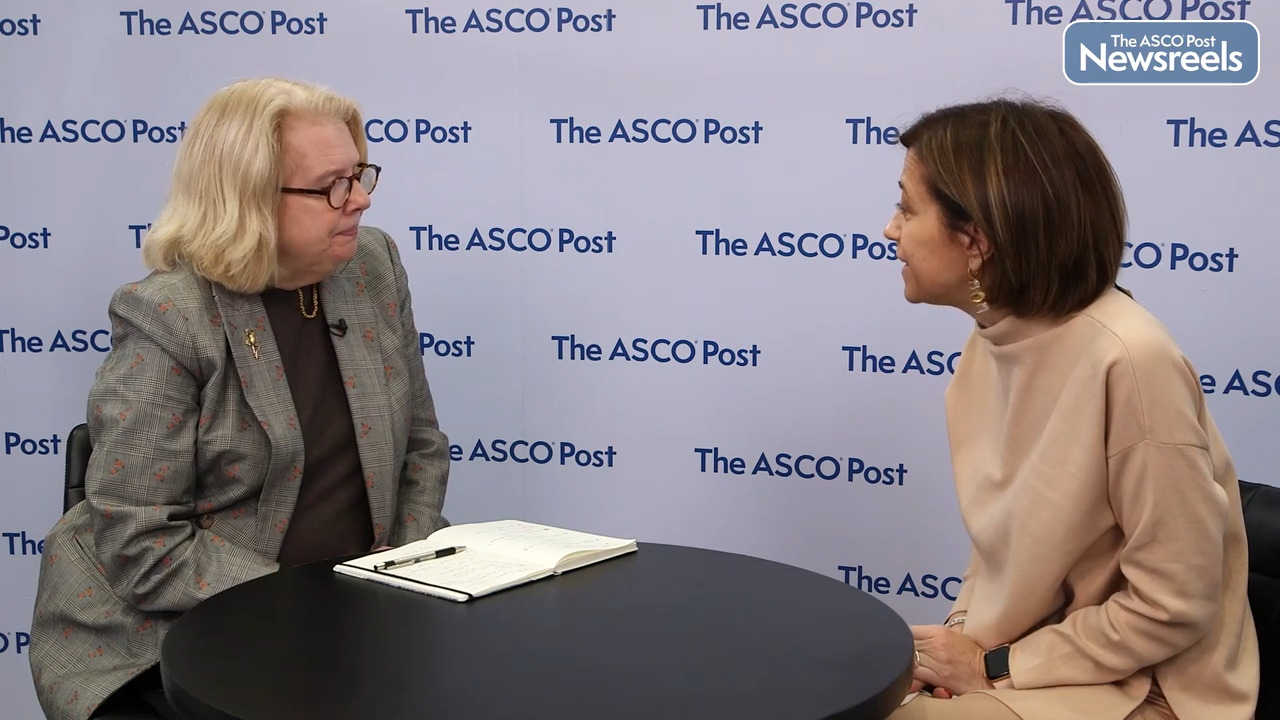Richard Finn, MD, on Advanced Breast Cancer: New Data on Palbociclib Plus Letrozole From PALOMA-2
2022 ASCO Annual Meeting
Richard Finn, MD, of the Geffen School of Medicine at UCLA and the Jonsson Comprehensive Cancer Center, discusses analyses from the PALOMA-2 trial on overall survival with first-line palbociclib plus letrozole vs placebo plus letrozole in women with ER-positive/HER2-negative advanced breast cancer. The study met its primary endpoint of improving progression-free survival but not the secondary endpoint of overall survival. Although patients receiving palbociclib plus letrozole had numerically longer overall survival than those receiving placebo plus letrozole, the results were not statistically significant (Abstract LBA1003).
Transcript
Disclaimer: This video transcript has not been proofread or edited and may contain errors.
The development of CDK 4/6 inhibitors in advanced breast cancer have really been a hallmark advance for the management of that group of patients. The first CDK 4/6 inhibitor was palbociclib, based on the PALOMA-1 study, which demonstrated a significant improvement in progression-free survival for that population. Since that time, there's been seven randomized studies with CDK 4/6 inhibitors, which have confirmed that observation. The PALOMA-2 study was the confirmatory study with palbociclib and letrozole versus placebo and letrozole, whose primary endpoint was to improve progression-free survival. And we demonstrated that, and that has served for the global approval of palbociclib in this population of patients. Now we are presenting the overall survival data from that study. This has been long awaited and with seven and a half years of follow-up, we're showing that there is a numerical improvement in overall survival, but this does not reach statistical significance. Really, in the context of advanced breast cancer, we have seen that as a class, CDK 4/6 inhibitors have improved overall survival. Specifically in PALOMA-2, there were some challenges that limits our assessment over overall survival. Specifically, we had about a third of the patients that had missing data for overall survival at the time of our analysis. Much of that was from patients withdrawing consent, as well as patients lost to follow up. We did demonstrate though, in those groups or subgroups of patients where the dropout was less pronounced. And actually there was also a disproportionate dropout in the control arm versus the treatment arm, so when we looked at subgroups where the dropout was a little closer, we did see that there was a trend towards an improvement in overall survival with palbociclib and letrozole versus the control arm of letrozole alone. The other thing to note is PALOMA-2 included about 20% of patients who had a disease-free interval of less than one year. And when we look at the largest group of patients in our study, which are those had a disease free interval of greater than 12 months, we actually see quite significant improvement in overall survival, given it's a subgroup analysis and is being looked at retrospectively. There was also a pre-planned analysis, combining data from PALOMA-1 and PALOMA-2. And in that analysis, we see again, a strong trend towards improvement in overall survival with palbociclib. And when we look again at this group of patients who had a long disease-free interval greater than 12 months from their adjuvant treatment, again, a very strong trend towards improving overall survival. So the take home message is PALOMA-2 met its primary endpoint of improving PFS, improved objective response rate. It has maintained quality of life. And with seven and a half years of follow-up, there's no new toxicity, there's no cumulative toxicity, and when we look at the overall survival for the whole population of patients, we see that it's over 50 months, which is really striking and tells us that the incorporation of CDK 4/6 inhibitors into the management of these women is really changing the natural history of this subtype of breast cancer.
Related Videos
The ASCO Post Staff
Ann H. Partridge, MD, MPH, of Dana-Farber Cancer Institute, and Véronique Diéras, MD, of the Centre Eugène Marquis, discuss the many challenges posed by next-generation antibody-drug conjugates (ADCs). They include side effects such as hematotoxicity, gastrointestinal toxicities, and interstitial lung disease; tumor targeting and payload release; drug resistance; and the urgent need to understand ADCs’ mechanisms of action to better sequence and combine drugs.
Paul G. Richardson, MD, of Dana-Farber Cancer Institute, discusses phase III findings from the DETERMINATION trial, which showed that, for patients with newly diagnosed multiple myeloma, lenalidomide, bortezomib, and dexamethasone (RVd) with or without autologous stem cell transplant (ASCT) and lenalidomide maintenance to disease progression resulted in the longest median progression-free survival reported for each approach, and a highly significant difference in progression-free survival in favor of early transplant. While overall response rates were similar, rates of MRD favored early transplant also, but toxicity was greater and quality of life was transiently but significantly diminished. No overall survival advantage has been observed to date (Abstract LBA4).
The ASCO Post Staff
Clifford A. Hudis, MD, of the American Society of Clinical Oncology, and Karen E. Knudsen, PhD, MBA, of the American Cancer Society, discuss their collaboration, pooling their research and education resources to help empower patients with cancer and their families. Within 48 hours, Drs. Hudis and Knudsen were able to gear up a rapid response to the crisis in Ukraine, forming a clinical corps of volunteers to post information online in multiple languages, which helped patients navigate their care in the war-torn region. To date, 300 European cancer organizations have joined their efforts.
The ASCO Post Staff
Ursula A. Matulonis, MD, of Dana-Farber Cancer Institute, and Domenica Lorusso, MD, PhD, of Italy’s Gemelli University Hospital, discuss phase III data from the MITO23 trial on single-agent trabectedin vs clinician’s choice of chemotherapy in patients with recurrent ovarian, primary peritoneal, or fallopian tube cancers of BRCA-mutated or BRCAness phenotype. Although trabectedin has demonstrated antitumor activity in relapsed platinum-sensitive disease, it does not appear to improve survival outcomes when compared with standard chemotherapy in the BRCA-mutated population (Abstract LBA5504).
The ASCO Post Staff
Eunice S. Wang, MD, of Roswell Park Comprehensive Cancer Center, discusses long-term phase II findings of a trial evaluating crenolanib plus chemotherapy in newly diagnosed adults with FLT3-mutant acute myeloid leukemia. The study showed a composite complete remission rate of 86%. With a median follow-up of 45 months, median overall survival has not been reached. A phase III trial is ongoing (Abstract 7007).





